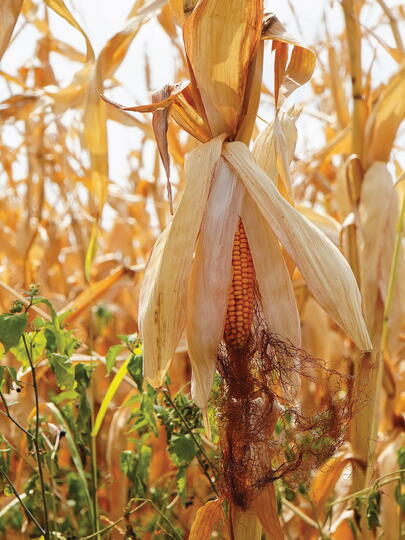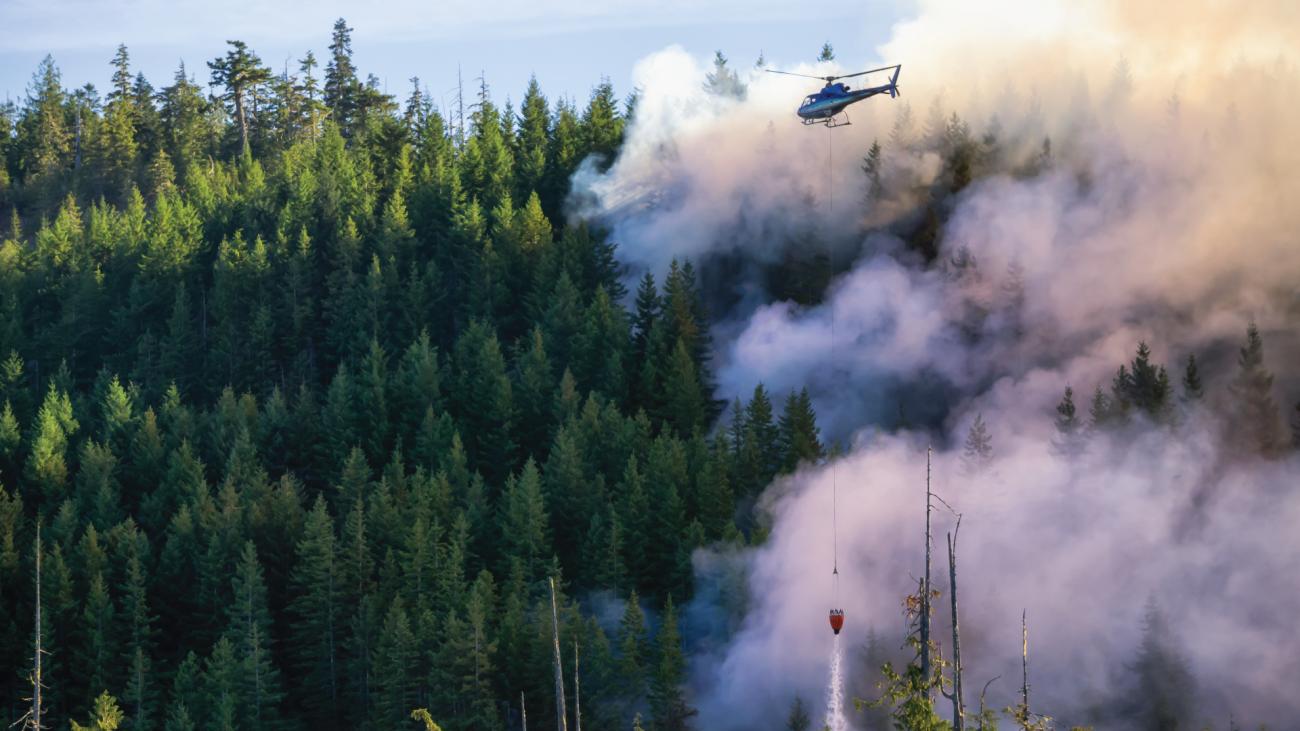Wildfire smoke may warm the Earth for longer than we thought
Wildfires are a major source of air pollution. They are also predicted to worsen as climate change progresses.
Within the smoke particles produced by these fires is a wide range of organic chemical compounds known as “brown carbon.” Brown carbon absorbs sunlight, and in doing so, contributes to global warming.
Over time, the brown carbon is bleached by chemical reactions with oxidants in the atmosphere (such as ozone) and becomes white. This means that it stops absorbing light and stops warming Earth.
This bleaching process is heavily dependent on atmospheric conditions, which vary across regions. The longer it takes for brown carbon to become white, the greater an impact it can have on the environment.
As atmospheric chemists living in a region frequently polluted by wildfire smoke, we wanted to know more about these effects. We worked together with atmospheric chemists at the University of Toronto and Oklahoma State University, along with atmospheric modellers at the Massachusetts Institute of Technology, to find out just how long this bleaching process takes and the atmospheric impacts.
Aerosols and climate
Aerosols are microscopic liquid and solid particles suspended in the atmosphere. They’re smaller than the width of a human hair, but are still made up of many molecules.
Aerosol particles are everywhere and have a large effect on both health and the climate. When aerosol particles interact with light, a portion of the light is absorbed but the rest reflects and scatters off of the particles.
For most types of aerosol particles, the amount being absorbed is negligible. That means a lot of the light reflects back to space. Through this mechanism, some of the pollution we create actually masks the full impact of greenhouse gases.
Some aerosol particles, however, are coloured, which means they are absorbing some light. Any light from the sun that is absorbed instead of getting reflected back into space is converted into heat and warms the planet.
Aerosol particles from smoke contain brown carbon. The various molecules that make up brown carbon are similar to some organic dyes, overall giving it a characteristic brown colour. However, when ozone in the atmosphere reacts with brown carbon, it can transform it into new colourless molecules that do not warm the earth.
Significantly slower reaction
It was previously assumed that reactions between brown carbon and ozone were relatively fast. Within one day of being emitted from a fire, brown carbon would mostly stop absorbing solar radiation. But now, through a combination of laboratory experiments and atmospheric simulations, it is clear that the reaction between brown carbon and ozone can be significantly slower.
Experiments on pine wood smoke showed that brown carbon quickly lost its colour when exposed to ozone in a warm, humid environment. Conversely, when the temperature and humidity were decreased, the brown carbon remained.
This is because temperature and humidity change the viscosity of aerosol particles. Humid conditions lead to a lot of water getting absorbed into the particles, and as a result they become very fluid. But if that water is removed and the aerosols get cold, they become very viscous, like molasses — or even glass in extreme conditions.
For an oxidant like ozone to bleach brown carbon, ozone needs to penetrate and mix within the smoke particles. When smoke particles become viscous, the oxidants take an extremely long time to mix — over a year in some cases.
At altitudes less than one kilometre in the atmosphere, conditions are relatively warm and humid so smoke particles are often not very viscous and brown carbon bleaches quickly. But at higher altitudes the air is drier and colder. When smoke particles get up to these heights, they can become highly viscous and the bleaching process can be so slow that it practically does not happen.
Atmospheric modelling
The result is significantly different when we put this new, longer-lasting brown carbon into an atmospheric model that simulates the transport of aerosols around the planet and how they interact with solar radiation. The new results show a warming effect on the climate from brown carbon that is twice that of the previous estimate.
This represents another important piece of the climate puzzle.
The Stockholm Resilience Centre’s Planetary Boundaries framework identifies the processes that regulate the stability and resilience of the Earth system. Aerosols are classified as one of the nine key ways that humans change the environment, but the total risk they pose remains unquantified within the Planetary Boundaries framework.
Research on aerosols can bring us closer to understanding their total effect on the environment, which will make us more prepared and better equipped to deal with the future of our planet.![]()
Nealan Gerrebos is a PhD Student in Chemistry at the University of British Columbia and Allan Bertram is a Professor of Chemistry at the University of British Columbia.
This article is republished from The Conversation under a Creative Commons license. Read the original article.
![]()
































